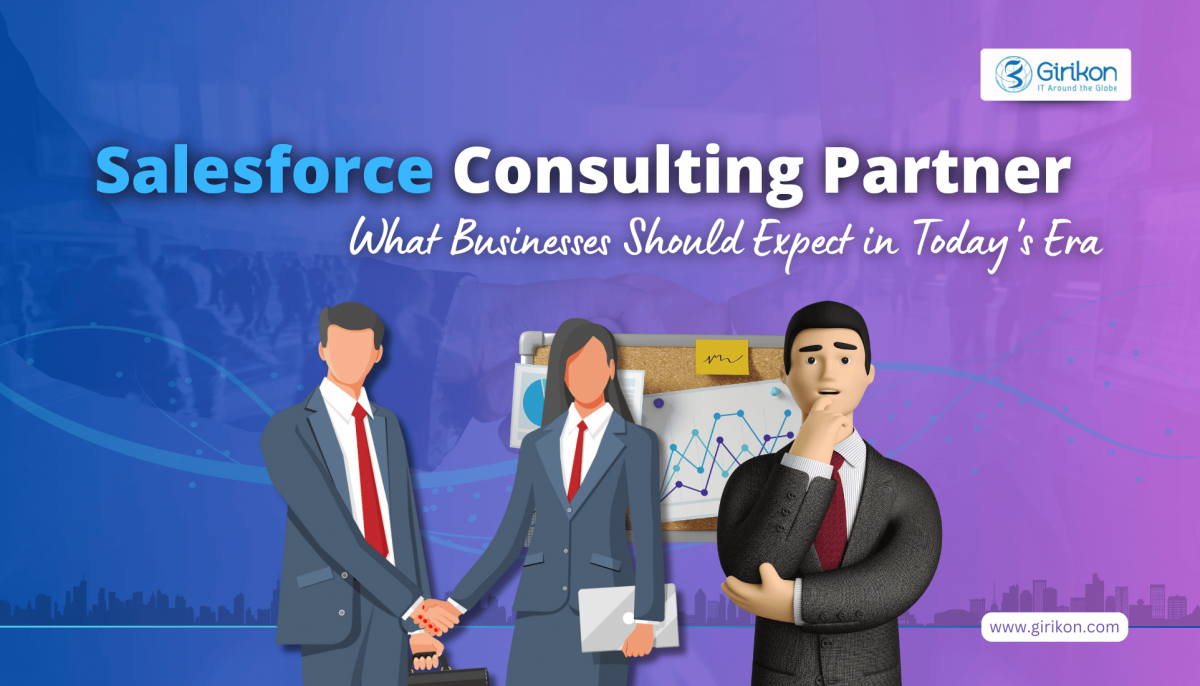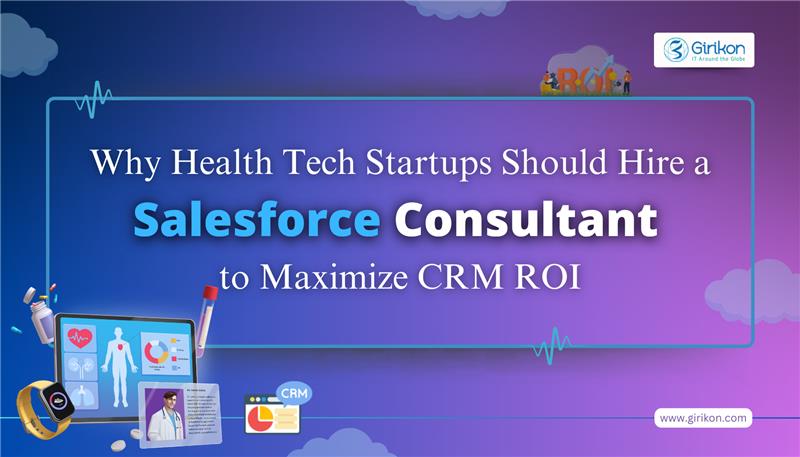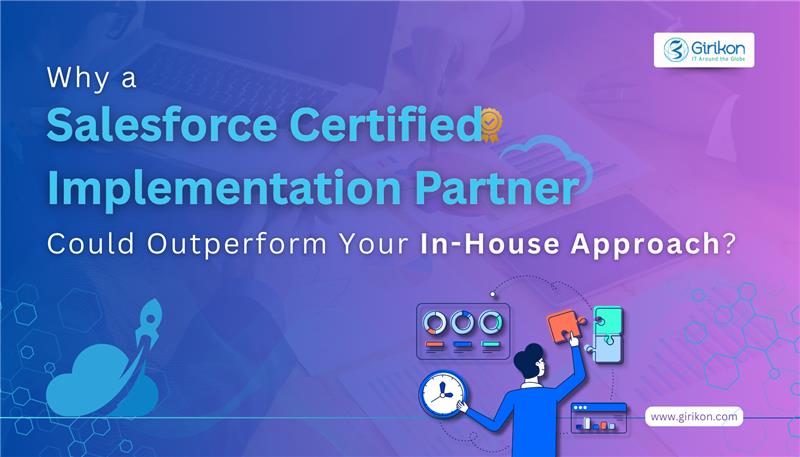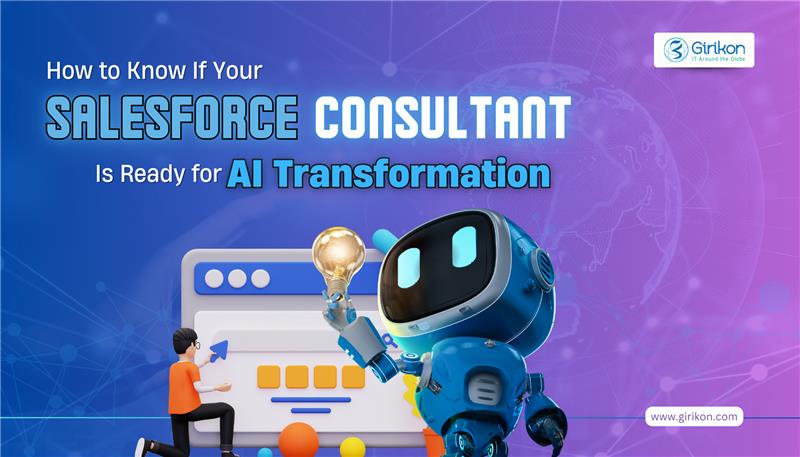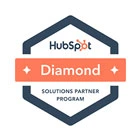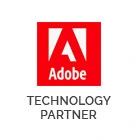In the rapidly evolving business environment, it is essential for companies to utilize state-of-the-art technology to stay competitive. Nowadays, forward-thinking businesses are incorporating artificial intelligence (AI) into their operations, particularly through the adoption of customer relationship management (CRM) software, to automate and enhance their CRM processes. Salesforce, a leading CRM platform, has consistently been a pioneer in innovation, especially in the realm of artificial intelligence (AI). Notably, Salesforce AI has transformed the way organizations handle their customer service processes.
The integration of Salesforce and AI is more than just an augmentation. It has indeed opened new avenues in Customer Relationship Management (CRM). Rather, it offers a smarter, efficient, and a highly custom-made customer interaction. To know more about Salesforce AI integration, businesses should consider partnering with a reliable Salesforce consulting partner.
Salesforce and Generative AI: A Dynamic Relationship
As a cloud-based platform, Salesforce is highly customizable and configurable and can be leveraged by organizations to meet their unique business needs by tailoring their services. By leveraging tools like Salesforce Flow, users can automate intricate business processes, create agile service experiences, while streamlining data management.
The next phase of transformation will involve incorporating the capabilities of generative AI into a versatile platform using Einstein GPT. This integration holds the potential to transform the way businesses function and engage with their customers
How to Leverage AI to Improve Customer Service?
Listed below are ways how AI can help businesses provide better service to their customers:
Improved Customization: Utilizing AI will empower businesses to deliver personalized experiences by harnessing customer data and their preferences. This will pave way for tailored recommendations, quick support, and a deeper comprehension of customer requirements.
Unified Omnichannel Support: AI-driven chatbots can integrate easily with several communication channels such social media, web chat and more. This guarantees uniform interactions across several platforms, offering customers a unified experience.
Intelligent Automation: AI can be leveraged to automate repetitive and mundane tasks thereby saving a lot of time that can be used up by human agents to focus on more complex and strategic activities. This will boost productivity, quicken response times, and optimize cost for businesses.
Sustained Learning and Development: AI systems will keep gathering insights from customer interactions, feedback, and real-time data, which in turn will foster continuous improvement. This continuing improvement will yield more precise responses, intelligent recommendations, and enhanced overall performance.
What are the benefits of AI in customer service?
AI in customer service offers several benefits that can improve the overall customer experience and streamline business operations. Some of the crucial advantages include:
Increased Productivity: Leading IT players believe that AI can be adopted by organizations to serve their customers in a better way. Research conducted reveal that access to AI assistants and tools can increase productivity for support agents significantly.
Increased Efficiency: Carrying out tasks manually can be burdensome for service agents. This includes tasks such as navigating between different systems to access customer history, searching for relevant informative articles, sending field staffs to service locations, and manually inputting responses. These manual processes are usually prone to errors as they are executed by humans. The integration of AI in customer service can provide intelligent suggestions to service workers drawn from knowledge bases, and customer data.
A more Personalized Interaction: When a customer interacts with a chatbot, artificial intelligence (AI) has the capability to retrieve vital details, such as the name of customer, location, account type, and language preferred. If the inquiry demands the involvement of a field service technician, AI can promptly convey all relevant information to the technician, allowing them to deliver tailored service as soon as they arrive on-site.
Less Exhaustion and Enhanced Morale: AI empowers agents to do away with monotonous, time-intensive tasks, enabling them to focus on tasks that demand creative thinking, problem-solving, and intricate critical thinking. These activities significantly impact the overall customer experience. Consequently, it shouldn’t come as surprise that majority of IT leaders anticipate that generative AI will alleviate workload of teams, while reducing burnout.
Scalability: AI systems can simultaneously handle a huge rush of customer queries making it simpler for businesses to scale their customer service operations without consistently increasing staffing levels.
A Practical Service Experience: AI has the capability to draw information from contracts of customers, warranties, buying history, and marketing data. This ensures the identification of optimal actions for agents to pursue with customers, even post the conclusion of the service engagement.
The future of AI in Customer Service:
The future AI seems to be quite promising in the customer service industry. In the years to come, artificial intelligence is poised to gain prominence in workplaces given the ongoing advancements in technologies such as machine learning and natural language processing (NLP). Besides handling routine tasks, these AI programs will offer significant insights into consumer behaviors and habits through big data analysis. Organizations can utilize this valuable data to optimize their return on investment in marketing strategies and branding initiatives. As technology evolves, AI is set to play a key role in uplifting customer experiences and boosting operational efficiency.
Final Words:
The fusion of AI and Salesforce is reshaping the CRM terrain, presenting matchless possibilities for organizations to elevate both their customer relationships, as well as their operational efficiencies. This integration when leveraged by businesses enables them to position themselves at the frontline of technological advancement, ensuring they stay competitive and in agreement to the ever-changing needs of their customers. In doing so, organizations can provide value to customers and stakeholders while future-proofing their operations in this quickly evolving digital era. Organizations should consider availing Salesforce implementation services if they wish to make the most of the integration of Salesforce and AI.
According to Salesforce research, close to 90% of customers say that a business's overall experience is as important as its products or services. In today’s competitive landscape where companies are juggling between staffing shortages and overwhelmed resources, they need to be able to do more with less. Customer expectations are at an all-time high, and given the plethora of options available to them, anything less than an exceptional experience will lead to customer churn.
Automation and self-service technologies have given many businesses across industries a significant improvement in productivity, cost savings, and customer satisfaction. In 2021, Salesforce reported that customers using its Cloud products and self-service tools such as AI chatbots witnessed a 30% increase in customer satisfaction along with a 27% improvement in agent productivity.
To meet this ever-growing demand, Salesforce launched Virtual Assistant – an Einstein-powered chatbot solution built specifically for financial services businesses to automate routine customer requests faster across popular digital channels like SMS or messaging platforms. This enables agents to focus on complex cases while chatbots can promptly resolve routine service requests, such as updating credit card information, renewing subscriptions, making payments, modifying subscription plans, and more.
Virtual Assistant offers multilingual support, allowing businesses to use a single chatbot across multiple geographic regions regardless of their native language. And in the future, Einstein-powered Virtual Assistants will automatically create support articles based on customer conversations.
Salesforce Chatbots for financial services come with pre-built bot templates, leading to faster setup and deployment. They can streamline support and assist agents with routine questions such as “How do I calculate my tax?” or “How do I upgrade my insurance plan?”
With Virtual Assistant, financial services companies can re-direct thousands of customer calls to the Salesforce Chatbot leading to significant cost savings.
Salesforce Chatbots can handle thousands of concurrent conversations for queries such as loan application status, product information, insurance premium renewal, claim filing, technical support, and more, freeing up dozens of front-line agents.
Salesforce Chatbots improve the customer experience by enabling seamless self-service for simple tasks, thereby significantly reducing wait times to speak with an agent. The rewards of embracing self-service technology can be substantial, and businesses need to leverage technology to scale quickly and deliver efficient customer service.
Features of Salesforce ChatBots
Salesforce Chatbots powered by Einstein are equipped with advanced features to solve customer issues by replying to their questions and understanding their behavior to evolve continuously.
Here are some stand-out features of Salesforce Chatbots that you should be aware of before you hire a Salesforce Development Partner for its implementation.
Natural Language Processing (NLP)
Salesforce Chatbots use NLP to understand customer intent and provide relevant answers. This makes bot interactions more natural for customers.
Multi-Channel Support
Salesforce Chatbots can be deployed on multiple channels such as mobile apps, websites, online stores, social media pages, and on popular messaging platforms like WhatsApp and SMS. This allows customers the convenience and flexibility to interact with businesses on their preferred channels whenever they want.
Personalization
Salesforce Chatbots can personalize responses based on customer data, their preferences, past purchases, and browsing behavior, making every interaction more relevant and meaningful.
Contextual Conversations
Salesforce Chatbots can understand and maintain context across multiple conversations regardless of the channel, thereby providing more accurate and relevant responses to customer queries.
Integration with Salesforce
Salesforce Chatbots are built on the world’s leading CRM platform, allowing for seamless integration with other Salesforce cloud products. With Salesforce Chatbots, managing customer data has never been easier.
Analytics and Insights
With Salesforce Chatbots, businesses can get valuable insights into customer behavior. By analyzing customer interactions, Salesforce Chatbots can help businesses identify areas for improvement to enhance the customer experience.
Continuous Learning
Salesforce Chatbots leverage machine learning algorithms to learn continuously from every interaction and better their responses over time, improving the accuracy and relevance of responses as they gain more experience.
Here are some generic features of Salesforce Chatbots.
Re-direct bot conversations to human agents for complex customer queries.
Understand the intent of customer queries.
Rapid response times.
Understand customer input and recognize errors.
Available 24/7.
Lead generation – collect customer data and qualify leads for sales teams.
Scale customer service with personalized automation and connected customer data
According to Salesforce, new features in Financial Services Cloud such as proactive service and call deflection will enable financial services firms to reduce operating expenses while delivering exceptional customer service experiences:
In 2021, Salesforce customers reported a 27% increase in case resolution with self-service automation and AI-powered Chatbots (Virtual Assistant). Salesforce Chatbots automate routine request resolution across popular messaging channels such as SMS and WhatsApp, so agents can spend more time on cases that necessitate human intervention.
With Customer Service Coordination, agents can collaborate in Slack to fast-track case resolution. With automated workflows and custom Chatbots, Customer Service Coordination gathers customer data and generates alerts in a central Slack channel allowing teams to respond to critical incidents faster like fraud incidents, executing time-sensitive trades, and claims processing.
With the Customer Data Platform, financial services marketing teams can unify customer data from multiple sources with a point-and-click interface. This enables marketing teams to engage with customers across multiple channels such as web, email, mobile, and social media in a far more personalized way. With Salesforce Chatbots, enhanced Insights, and Data Actions, one-on-one advisor interactions and transactions can be triggered in real time.
A unified console with actionable insights and workflows for faster service
New features in Salesforce Financial Services Cloud include AI-powered dashboards and Chatbots to deliver key insights:
With Intelligent Agent Desktop, agents can get access to deeper customer insights from right within the console page. With Customer Identity Verification, agents can reduce the risk of fraud, and with Customer Record Alerts, Chatbots can serve up issues that customers may not be aware of when they initiate a conversation.
With Analytics for Financial Services, financial services businesses can interpret customer data with insights for faster and better decision-making, eventually delivering more revenue, and strengthening customer engagement.
Girikon has been a Salesforce Consulting Partner for over a decade providing unique and scalable solutions for the financial services industry. We have the necessary expertise in-house to deliver tailored experiences to every customer through self-service, automation, and AI to improve efficiency across your business. Contact us today to learn more about how Salesforce Chatbots can transform your financial services business.
There has been a gradual shift in the way customers interact with businesses, over the past few years. For ensuring long-term customer-relationships, organizations should focus on compassion, convenience, personalization, and digital transformation. So, how are organizations delivering seamless experience to users? They are doing so by strategically and systematically planning digital transformation on the right platform and Salesforce Lightning provides the right platform to develop applications quickly. It makes sense to get in touch with a service provider that offers reliable Salesforce Consulting Services
What is Salesforce Lightning?
Salesforce Lightning platform is a cutting-edge platform that empowers users to enhance their CRM platform and user experience (UX) in an improved manner. The user interface of the Lightning platform was unveiled by Salesforce in the year 2015 and has since then evolved into the standard interface for all Salesforce enterprises. Thanks to its distinguishing design, productivity tools, and integrated artificial intelligence features, Lightning streamlines business operations and help businesses attain their objectives. Businesses can create personalized and adaptable applications using the Lightning Component-based framework, all the while providing immersive user experiences through Lightning components.
Why is Salesforce Lightning Preferred Over Salesforce Classic?
While Salesforce Classic provides numerous CRM features, end users are increasingly seeking a streamlined user-centric design with fewer clicks and modern functionalities like drag and drop. By identifying this demand, Salesforce has introduced Lightning Experience, the next iteration of the Salesforce user interface designed to augment speed and productivity. With the 'mobile first' approach gaining prominence, there is a pressing need for responsive user interfaces and single-page applications. Lightning offers a set of tools and technologies that provide a fresh and contemporary user experience appropriate for both desktop and mobile applications.
How is Salesforce Lightning Re-defining User Experience?
Salesforce devised a user-friendly and intelligent platform that boosted the productivity of sales teams seamlessly while facilitating greater and quicker deal closures. The look and feel of Salesforce Lightning incorporate user interface improvements like readable text, graphics and icons resulting in a more lucid view of the business. Moreover, the application offers upgraded dashboards that enhance the visibility of critical metrics for specific business units, enabling a holistic overview for all teams and customers.
The Lightning Platform offers an enhanced user experience through the incorporation of drag-and-drop functionality along with heightened security settings for Salesforce implementations. Lightning serves as an intelligent tool that adapts to existing organizational habits and patterns, providing smart recommendations as and when utilized. It streamlines the access to Contacts, Quotes, and Proposals for sales professionals thereby reducing the need for excessive clicks and external work, which ultimately enhances the efficiency of sales teams.
Why Should Businesses Prefer Migrating to Salesforce Lightning?
Businesses that have migrated to Salesforce Lightning Experience are likely to be more productive than those working in Salesforce Classic. The Salesforce Lightning allows businesses to close deals faster with enhanced rate of collaboration and conversion.
For better end-user experience, the Lightning platform offers robust functionality.
Lightning provides high-end security to users.
It provides user-friendly interface that allows you to create responsive applications.
With Lightning, businesses can offer superior customer services, improved personalization and increased rate of conversion.
The databases are updated automatically to provide you with intelligent insights with the help of Einstein Analytics.
What are the Significant Benefits of Using Salesforce Lightning for Your Business?
Salesforce Lightning can assist businesses with several benefits including increase in their productivity, seamless operations, and work on modern interfaces. Some of the benefits offered by Salesforce Lightning include:
Sales Automation: Achieving cent percent efficiency in converting leads into sales is nearly impossible. Therefore, organizations are creating different strategies to boost their conversion rates, although the outcomes may not always fulfill their expectations. Salesforce Lightning with its latest features aims to automate the sales process.
Enhanced User-experience: Salesforce offers a modern and intuitive interface for the Lightning framework. Though, the changes are difficult to observe with the naked eye, the overall experience is seamless. The interface is customizable and is designed to increase productivity.
Quick Development of Apps: Creating and building applications has never been easy than it is today. Due to the component-based nature of Salesforce, businesses can seamlessly incorporate pre-made components from Salesforce partners and incorporate them into your application. The most delightful aspect is that you can effortlessly employ these components by simply dragging and dropping them.
Quality Leads: Ample amount of time is left post your application development and optimization of your sales process. The time left can be allocated to Einstein AI Technology, which helps in understanding the specific needs and objectives while monitoring possible leads. Its tracking capabilities include comprehensive data on all potential leads about their sales preferences, performance, and interactions. Einstein uses this data to filter the leads before you approach them in-person. This ensures that organizations will receive high-quality leads which are most likely to turn into sales.
Data Privacy: Data privacy remains the pinnacle feature of any framework. You would not appreciate breaching the policies and sneaking into your business information. With the new updates in Lightning, CRM has focused on privacy. The individual components that are a part of the Salesforce Lightning framework cannot interact with each other. This eliminates the likelihood of malicious activities while providing a fresh interface for the users.
Quick Wrap-up:
Salesforce Lightning is one of the best available CRM solutions for building customized applications. With Lightning, organizations can augment the competence of sales and marketing teams while increasing overall ROI. If you want to migrate from Salesforce Classic to Salesforce Lightning or simply implement Salesforce Lightning, you must get in touch with a reputed Salesforce Lightning Company
Chatbots are making their way into almost every industry known to man. With businesses recognizing the value of automating repetitive tasks, it is only a matter of time before we witness a large-scale adoption of Chatbots across industries and businesses. One of the interesting things about Chatbots is that they can be programmed to accomplish different tasks for different industries. GirikSMS Salesforce Chatbot, developed by Girikon, a Salesforce Implementation Partner for over a decade, helps businesses across industries automate tasks, streamline operations, scale quickly, and reduce overall costs while improving efficiency.
GirikSMS Salesforce Chatbots are powered by AI and machine learning and leverage Salesforce CRM data to deliver personalized best-in-class customer experiences at scale. While it is impossible to detail each and every scenario where GirikSMS Salesforce Chatbots can come in handy, this blog gives an overview of how you can leverage GirikSMS Salesforce Chatbots for your business success. And our chatbots are self-learning, which means they get better with every interaction. Here are some use cases for GirikSMS Salesforce Chatbots.
CONSUMER GOODS AND RETAIL
Customers spend a lot of time navigating through menus and category pages to find the one product they want to buy. And if this discovery process is too long or something else grabs their attention, many of them abandon their carts. GirikSMS Salesforce Chatbots can help compress this product discovery journey for customers. GirikSMS Chatbots give customers easy access to product information and give smart product recommendations based on their past purchases. Not only that, GirikSMS Salesforce Chatbots can also generate discount coupons and offers on the fly for customers who have abandoned their carts, to nudge them to complete the purchase.
GirikSMS Salesforce Chatbots are a great tool for sales and marketing teams. Chatbots assist sales and marketing reps by leveraging CRM data and providing real-time reports and alerts. GirikSMS Salesforce Chatbots can help teams with personalized customer information and serve up highly accurate, timely, and relevant data to help them move leads faster through the sales funnel.
FINANCIAL SERVICES
You have likely interacted with a chatbot while dealing with your bank for routine queries or operations such as fund transfers, balance inquiries, approvals, and more. The financial services industry is one of the early adopters of Chatbots. GirikSMS Salesforce Chatbots can be used by financial services businesses to improve customer satisfaction and engagement. For instance, banks can use GirikSMS Chatbots to interact with customers for routine queries such as account balance, bank statements, fund transfers, starting an investment plan, investment advice, and much more. Insurance companies can use GirikSMS Salesforce Chatbots for offering automated services such as premium renewal, plan upgrades, claims processing, educating customers on technical terms, sending alerts and reminders, and more.
And this is on the customer interface. Financial services businesses can also use GirikSMS Salesforce Chatbots to perform several routine and repetitive internal operational tasks such as contract review and analysis, sorting, segmenting and qualifying applications, employee engagement, IT ticket management, and more.
HEALTHCARE
GirikSMS Salesforce Chatbots can be very useful for healthcare businesses. They can perform routine tasks for receptionists and nursing staff such as checking supplies inventory, posting requests for supplies and medicines, managing appointments and home visits, assisting doctors with patient reports, track post-op recovery, managing appointment calendars, and much more.
MANUFACTURING
The manufacturing sector has always struggled with communication gaps in day-to-day operations. Manufacturing companies have to deal with a dynamic supply chain of wholesalers and distributors and need them to be in sync with their assembly line. GirikSMS Salesforce Chatbots can help manufacturing companies connect all constituents and facilitate seamless interaction.
Vendor management, shift management, and product-related assistance are some of the areas where GirikSMS Salesforce Chatbots can be useful in the manufacturing industry.
HOSPITALITY
GirikSMS Salesforce Chatbots can used to provide better guest experiences, acting as a virtual concierge and assistant for hospitality businesses. GirikSMS Salesforce Chatbots are available 24/7 to provide best-in-class service that improves customer loyalty and satisfaction.
AVIATION
GirikSMS Salesforce Chatbots bots can be used by the aviation industry to book, re-schedule, or cancel tickets, plan travel, send reminders, notifications, and announcements, assist with web check-ins, provide flight options based on customer preferences, and assist with other travel arrangements.
EDUCATION
GirikSMS Salesforce Chatbots work seamlessly with Education Cloud to deliver exceptional experiences to students, faculty, and staff. For students, GirikSMS Salesforce Chatbots can automate many tasks within the recruitment and admissions process, providing assistance to students, conducting surveys and polls, engaging with parents and building trust and confidence, managing advisor appointments, updating students on campus happenings, assisting in course enrolment, submission of assignments and more. For faculty, GirikSMS Salesforce Chatbots can assist with scheduling special classes, setting up virtual advisory sessions, managing assignments, tracking student progress, and much more.
OIL AND GAS
GirikSMS Salesforce Chatbots can be used by oil and gas companies to improve productivity and reduce worker risk. They can provide real-time customer support by providing information about the company's products.
UTILITIES
GirikSMS Salesforce Chatbots are powered by artificial intelligence (AI) and leverage CRM data to interact with customers via chat. They can help utility customers with assisted meter readings, and payment issues, provide real-time customer service, and escalate urgent and complex issues to relevant personnel. Customers can easily report outages by sending a word like “outage” to a pre-defined number and receive regular updates about case resolution. GirikSMS Salesforce Chatbots can track and monitor KPIs to ensure customer service excellence.
REAL ESTATE
GirikSMS Salesforce Chatbots can engage in a conversation with home buyers the moment they click on an ad on land on the company's web page. They can help home buyers with more details about available properties, provide guided virtual walk-throughs, schedule site visits, check for mortgage options, analyze market trends, and collect feedback and preferences. GirikSMS Salesforce Chatbots can be deployed on all popular channels such as mobile apps, social media, websites, or messengers such as SMS and WhatsApp, ensuring 24/7 availability to customers.
While sales, marketing, and customer service are some of the common areas that Chatbots are being used today, GirikSMS Salesforce Chatbots can be used in any scenario regardless of the industry, not just for the use cases listed above. If you are a business owner or represent senior management, it is important for you to identify a use case that can deliver great ROI.
Have more questions on how GirikSMS Salesforce Chatbots can transform your day-to-day operations and take you on the path to success?
Get in touch with our expert today to know more about the use of GirikSMS Salesforce Chatbots in your industry.
When today's digital-first customers shop online for products or services, they expect 360-degree service that guides them to the right offering. Product descriptions and reviews are good, but they don’t provide the insight that customers seek to make their purchase decisions. They need unbiased, expert advice from someone who understands their needs and preferences. This is where Salesforce Chatbots play a vital role in sales and marketing.
Salesforce Chatbots are AI-powered tools with the Salesforce platform that allows sales and marketing teams to engage with customers in a personalized and effective way, on the channel of their preference. Salesforce Chatbots can be integrated with any website, app, or social media, allowing you to connect with your prospects and customers 24/7. Salesforce Chatbots ensure that your business is always available to your customers, so they can engage with you at the time and place of their convenience. Here are some of the key benefits of Salesforce Chatbots:
Personalized experience. Customers and prospects can engage with Salesforce Chatbots to get support on specific issues that are unique to them. Generic responses often lead to customer frustration and a higher bounce rate. Personalized Chatbot interactions build brand loyalty and improve customer retention.
Prompt service. When customers are looking for answers to common questions such as “Where is my order” or “When will the product be back in stock”, Salesforce Chatbots can give answers in real time, and send timely reminders to compel customers to come back again.
Saves costs and improves productivity. With Salesforce Chatbots, you can automate routine customer interactions and your human agents can focus on more complex customer issues. In a nutshell, you can do more with less. Chatbots allow you to scale your sales and marketing initiatives quickly without making a dent in your budgets.
Brand loyalty. No waiting for responses means customers will notice your innovation and prefer your brand viz-a-viz your competitors. Trust and loyalty translate to repeat business from customers.
How can Sales teams benefit from Salesforce Chatbots?
Salesforce Chatbots enable businesses to streamline many of their sales processes. They leverage customer data to engage with customers in a personalized way, making every interaction more meaningful and effective. With Salesforce Chatbots you can easily trigger automations that are aligned with your business goals by utilizing your CRM and product data, so sales teams can focus on what matters most – nurturing customer relationships. Here’s a look at how Salesforce Chatbots can assist sales teams in their day-to-day activities.
Identifying Qualified Leads
Salesforce Chatbots can ask relevant questions to potential customers and help qualify leads based on responses. Not just that, Salesforce will also recommend to your sales teams which are the most promising leads that they should focus on.
Prompt responses to customer queries
Salesforce Chatbots help you to provide quick and intelligent responses to customer queries 24/7, Which means your business is always available to them. So you can ensure that you don’t miss a single lead and can keep pace with customer demands even outside of usual business times.
By handling common, routine customer queries, Salesforce Chatbots free up a significant amount of time for sales teams to focus on more complex leads.
Personalizing the sales experience
Salesforce Chatbots can leverage customer data and past interactions to personalize the entire sales journey. With tailored messaging and recommendations unique to each customer, brands can significantly improve conversions.
Close deals faster
Salesforce Chatbots can guide customers throughout the sales journey and nudge them at the right time. For instance, Salesforce Chatbots can provide intelligent product recommendations, offers, or deals to customers who have added items to their cart but have not completed their purchase.
Salesforce Chatbots to Automate Marketing
Identify, segment, and market to your customers with personalized messaging across every step of the sales journey. Here’s how Salesforce Chatbots can help your marketing teams get more out of less.
Improve engagement.
With Salesforce Chatbots, you can focus on prospects and customers that are most likely to engage and transact.
Convert clicks into conversations and boost ad budget RoI
Generate and qualify leads and improve engagement over text conversations across popular texting channels such as SMS, WhatsApp, or Web chat.
Engage better with targeted campaigns
Engage with customers at scale with one-click or automated campaigns to a huge audience across popular messaging channels.
Trigger engagement with journey builder flows based on events such as cart abandonment, past purchases, past interactions, and more.
Launch tailored, outbound marketing campaigns and monitor their performance with actionable insights on key metrics such as click-throughs, sign-ups, and conversions.
Refine your marketing strategy with predictive insights
Segment your audience based on past purchases, demographics, and more, and automate campaigns.
Identify high-value customers, customers likely to churn, predict behavior based on buying patterns and preferences, and deliver intelligent product recommendations and offers.
Seamlessly integrate with third-party eCommerce platforms and other systems to personalize messaging.
Transform conversations into purchases.
Share the latest, tailored product catalogs with your customers on their preferred channels.
Automate updates for key activities such as order confirmation, shipment tracking, and new tailored offers.
Alert customers when their “notify me” products are back in stock.
With Salesforce Chatbots you can unify the customer experience, nurture relationships, and optimize better.
Unified conversational profiles
Get a single, unified view of all your customer interactions with easy, one-click access to engagement data.
Optimize performance
Get actionable insights on engagement, campaign performance, and conversions.
Cross-channel integration
Scale interaction across WhatsApp, SMS, online store, mobile app and website.
Leverage journey builder
Build flows and deliver conversational journeys easily across multiple channels without writing any code.
Scalability
Send campaigns to hundreds of thousands of customers instantly and handle millions of interactions per day, without hiring additional resources.
Change the playing field with Salesforce Chatbots
Salesforce Chatbots allow sales and marketing teams to quickly resolve customer queries in real-time, thereby significantly improving conversion ratios. Sales and marketing teams can engage with their audiences 24/7, collect data across channels, and refine their sales and marketing strategy to engage better with their audience.
Salesforce Chatbots empower sales and marketing teams to transcend the boundaries of geography and language, reach out to newer markets, and engage conversationally without any additional staff.
Looking to invest in Salesforce Chatbots? Trust Girikon, a Gold Salesforce Implementation Partner for over a decade to deliver for you. Contact one of our Chatbot experts today.
Customer service has become the cornerstone of every business and to ensure superior customer service, businesses should leverage the capabilities of a robust CRM platform. One such robust CRM platform is Salesforce, which is a cloud-based platform that assists businesses to streamline workflows while driving digital transformation. However, implementing Salesforce isn’t easy and requires expertise to tailor the platform as per the specific needs of an organization.
That’s where the need for a certified Salesforce Consulting company comes in. These companies are not just service providers but are certified by Salesforce to manage everything from system setup and customization to long-standing training and support. In fact, these professionals have the skill to translate the goals of an organizations into tailored solutions by leveraging the robust capabilities of Salesforce.
What are the Roles and Responsibilities of a Salesforce Implementation Partner?
Before engaging the services of a reliable partner, it’s essential to understand their roles and responsibilities to ensure seamless implementation. A reliable partner helps organizations to create effective strategy for utilizing Salesforce besides setting short-term, as well as long implementation goals. They are also responsible for setting up the system and tailoring it as per the needs of an organization. For ensuring seamless transition and improvement in workflow, a reliable partner will help organizations to integrate Salesforce with their existing systems. They also provide consulting services and end-user training after the accomplishment of implementation.
Factors to Consider Before Shortlisting a Salesforce Partner
Listed below are some crucial points to consider while selecting a Salesforce implementation partner:
Assess Experience and Expertise: It is crucial to look out for partners who have a proven track record of several successful implementations. It’s crucial to verify their experience, as well as expertise of working on projects like yours, their industry knowledge, and the number of certified professionals in their team. It also makes sense to look at client reviews to get insights about their prior performance.
Consider Certifications and Technical Skills: It’s important to ensure that the professionals you have shortlisted to work with are certified and possess the necessary Salesforce certifications. It’s also crucial to assess the technical proficiency through diverse project case studies. This will provide a better understanding of their practical experience.
Evaluate the Cultural Fit of Your Partner: Besides the technology skillset, it’s crucial to evaluate whether the partner in question has the same company vision, language and culture for communication. A partner who shares the same values, culture, vision, and communication approach will accomplish all the tasks while offering valuable insights through the implementation process. This enhances collaboration and contributes to a more successful project outcome.
Scalability: Before zeroing in the right engagement model for Salesforce implementation, organizations need to identify a partner who can provide the flexibility of quickly scaling up or down as their business evolves. Besides having adequate manpower to meet the evolving demands of an organization, they should have the technical prowess to meet those demands.
Ensure Transparency in Budget: While cost is a crucial factor, it’s equally important to focus on the value that a partner delivers. A partner that delivers results and aligns with the goals of an organization is worth the investment. It’s also crucial to ask for a cost breakdown to ensure there are no hidden costs besides getting an idea of market prices by comparing the pricing with other partners.
Training Capability: A good Salesforce partner will offer training and support to secure a strong adoption within your organization. Whether it’s marketing cloud creating educational videos or offering after-training support, this aspect of the Salesforce marketplace is crucial for long-term success.
Benefits of Engaging the Services of a Certified Partner
Listed below are some of the benefits of engaging a certified and trained implementation partner:
Real World Experience: One of the compelling benefits of engaging the services of a Salesforce implementation partner is the real-world experience and in-depth knowledge, which they bring to the table. In fact, they have years of practical experience of implementing Salesforce across various industries.
Customization Abilities: Certified partners understand that one-size fit all approach doesn’t fit with respect to Salesforce implementations. They have the know-how to develop solutions that are tailored to the specific needs of a business, which in turn is crucial for maximizing the benefits of the Salesforce system.
Reduces Employee Downtime: Implementing Salesforce is taxing and time-consuming, which can divert employees from performing their core responsibilities. A certified partner does all the heavy lifting by allowing teams to focus on their everyday tasks. This ensures smooth business operations for organizations.
Long-term Support: Reliable partners do not discontinue their support after the initial set up. Rather they continue to offer ongoing support to help businesses scale their system as their business evolves. Such an association is crucial for maintaining a responsive and agile business model.
Increased ROI: Salesforce Implementation Partners with their in-depth knowledge can restructure the deployment process thereby reducing time for implementation while increasing their return on investment (ROI). With this their chances of costly mistakes are reduced significantly.
Final Words:
A Salesforce implementation partner serves as a strategic resource that enables organizations to optimize the benefits of Salesforce through the successful delivery of Salesforce implementation services while making the most of the benefits that come with it. Therefore, engaging the services of an implementation partner isn’t just a wise decision but also an essential one. Their expertise and ability to tailor solutions besides overall support to minimize the possible challenges while ensuring sustained growth makes them a must have asset for every organization.
It's impossible to imagine life without a smartphone. In today's fast-paced world of 30-minute delivery and queue-less customer service, it is no surprise that businesses are looking at SMS communication to interact with their customers. Text messaging or texting is fast, cost-effective, reliable, has a high read rate of 98%, transcends all geographical boundaries, and is delivered instantly.
SMS texting empowers businesses to communicate with their customers instantly. Not just that. SMS texting allows you to tailor your messages for each and every customer. Translating to an enhanced customer experience.
At Girikon, we recognize that in today’s fiercely competitive landscape, when customers have so many options for products and services, customer satisfaction is a key differentiator. GirikSMS, our Bulk SMS messaging platform, is backed by our decade-long partnership with Salesforce. With GirikSMS, you can re-imagine your customer service strategy and engage customers in a way you have never done before.
What Are the Benefits of the GirikSMS Customer Service Platform?
Customers hate long hold times, delayed responses, and multiple email threads. With GirikSMS, you get a high degree of efficiency and convenience in your customer service.
Easy Opt-in and Opt-out: Before you launch any Bulk SMS campaign, you need to acquire consent from your recipients. With GirikSMS, customers can choose what type of messages they want to receive from your business so that they have complete control over their engagement with your brand. All via texting.
Wide Reach: With GirikSMS Bulk SMS, you can reach thousands of customers instantly. Send relevant messages at the right time to ensure maximum outreach.
Happy Customers: Research says that two-thirds of people prefer texting over calls and email. With GirikSMS, you can communicate with your customers in the way they want to.
Fast Responses: With a high read rate of 98% within 15 minutes, and a 40% response rate, with GirikSMS you can ensure that your messages are seen and acted upon quickly.
Build Relationships: SMS allows you to connect with customers on a personal level. With GirikSMS, your communication can resonate with your brand’s personality.
Automate: With Salesforce SMS integration, GirikSMS can leverage your CRM data and workflows to automate outbound Salesforce text messaging and record responses in your CRM.
Cost-Effective: Bulk SMS from GirikSMS is far more cost-effective compared to traditional marketing methods. With competitive pricing and the ability to reach a large audience instantly, GirikSMS significantly improves the return on investment for businesses.
Personalization: GirikSMS can be integrated with your Salesforce CRM, which means you can personalize every message based on customer data and their needs and preferences. Personalization helps you to build stronger relationships with your customers.
Code-less implementation: GirikSMS comes with an intuitive point-and-click interface, so you can launch your first SMS campaign in minutes.
Here are some of the ways in which GirikSMS can optimize customer service for your business:
Run Customer Feedback Campaigns
Customer feedback is vital to know their interest and confidence in your brand. It helps businesses to re-imagine their strategies to strengthen customer relationships. With GirikSMS you can easily launch campaigns to solicit their feedback, log their satisfaction levels, and learn about their interests and preferences. With GirikSMS, you can also create multi-optional polls to collect their feedback on a particular product or service they purchased from you.
Make Your Customers Feel That You Value Them
With GirikSMS, you can leverage your CRM data to send timely updates, like order confirmations, shipment tracking notifications, appointment reminders, instructional messages, and links to videos and articles to use your product and more. With GirikSMS, you can keep your customers informed and engaged throughout the product or service lifecycle. With personalized messaging and seeking their feedback, you demonstrate that you value their input and are committed to continuously improving your offerings.
Offers and Promotions
With GirikSMS, businesses can send tailored offers, discounts, or promotional codes to thousands of customers instantly. And all of this can be automated and personalized within your CRM. With GirikSMS you can always keep your customers engaged, drive sales, and build loyalty and confidence in your brand.
Automate Customer Support
Industry data indicates that almost 80% of customer support queries are routine cases. With GirikSMS AI-powered Chatbots, you can automate responses to these queries to deliver instant resolution to common concerns and free up agent time to focus on more complex customer issues. If the Chatbot cannot resolve the customer's concern after the exchange of a few messages, it can automatically route the conversation to the right agent. Not only does this allow you to scale your customer service operations quickly, but also builds customer confidence with quick resolution to their concerns.
Send Digital Receipts
In today’s paperless era, with GirikSMS, businesses can send digital receipts for every transaction via SMS. Digital receipts are fast, secure, and cost-effective. And these transaction receipts can always be coupled with discount codes so that customers keep coming back for more.
Best Practices for Bulk SMS Services:
Before launching a Bulk SMS campaign, it is important to look at a few pointers to ensure you are doing the right things the right way.
Obtain consent: Acquire the recipient's consent before sending bulk SMS messages. Consent-based customer service ensures compliance and maintains a positive brand image.
Targeted Messaging: If you are a Salesforce customer, you have likely segmented your customers based on demographics, interests, preferences, and purchase history. GirikSMS can leverage this customer segmentation data to send relevant and tailored messages. This improves the efficacy of communication and improves customer engagement.
Clear and Concise Content: SMS messages have a character limit. It is therefore important for your message to be clear and to the point. With GirikSMS, you can easily create templates based on business cases and send concise, tailored messages to deliver the intended information effectively.
Timing: Send your Bulk SMS messages at a time when they are most likely to be read within minutes. With GirikSMS you can schedule outbound Bulk SMS messages based on your audience location and time zone to maximize the likelihood of them being read quickly.
Test and Analyze: While Bulk SMS can be a very effective customer service and marketing tool, it is equally important to continuously track and analyze the performance of your campaigns. GirikSMS makes that possible. With GirikSMS you can easily track open rates, click-through rates, and conversions to refine your communication strategy and improve results.
Businesses of all sizes recognize that exceptional customer service holds the key to stability and growth. Customer service directly impacts brand value, customer loyalty, and sales. And with integration with Salesforce, GirikSMS-powered SMS from Salesforce gives you an invaluable tool to quickly scale up customer service and deliver enhanced customer service experiences.
Start a Free 14-day Trial Today.

 +1-480-382-1320
+1-480-382-1320 +44-7428758945
+44-7428758945 +61-1300-332-888
+61-1300-332-888 +91 9811400594
+91 9811400594